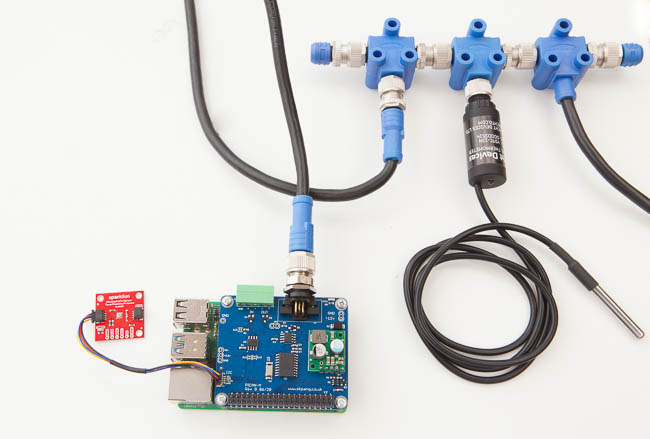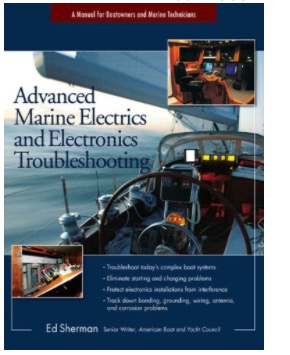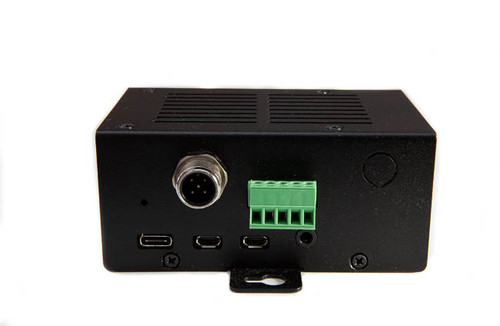Blog
Recent Posts
Programmable Maritime Application System Based on Raspberry Pi Supports NMEA 2000 Functionality
Posted by on

NMEA 2000 is a marine networking standard created and administered by the National Marine Electronics Association (NMEA). The NMEA is an association of marine electronics manufacturers, dealers, and technicians.
The NMEA 2000 standard describes a low-cost, moderate capacity, bi-directional, multi-transmitter, multi-receiver instrument network. Typical data on a network using this standard include:
- Position latitude and longitude.
- GPS status.
- Steering commands to autopilots.
- Waypoint lists.
- Wind sensor data.
- Engine sensor data.
- Depth sounder sensor data.
- Battery status data.
NMEA 2000 is the most consequent and straightforward adaptation of SAE J1939. It is a modernized version of an older standard, NMEA 0183, and it has a significantly higher data rate (250k/500k bits/second vs. 4.8k bits/second for NMEA 0183). It also uses a binary message format instead of the ASCII serial communications protocol used by NMEA 0183. Another distinction between the two protocols is that NMEA 2000 is a multiple-talker, multiple-listener data network, whereas NMEA 0183 is a single-talker, multiple-listener serial communications protocol.
For more information on NMEA 2000, see our post Introduction To The NMEA 2000 Marine Networking Standard.
PICAN-M - NMEA 0183 & NMEA 2000 HAT For Raspberry Pi With SMPS
Copperhill Technologies introduces the PICAN-M (M = Marine), a Raspberry Pi HAT with an NMEA 0183 and NMEA 2000 connection, to support marine applications.
The NMEA 0183 (RS422) port is accessible via a 5-way screw terminal. The NMEA 2000 port is accessible via a Micro-C connector.
The board comes with a 3A SMPS (Switch Mode Power Supply), allowing to power the Raspberry Pi plus HAT through the NMEA 2000 network (12 VDC).
The board comes with easy-to-install SocketCAN driver software, and programming is supported by languages such as C and Python. More Information on the PICAN-M...
Maritime Software Packages
The PICAN-M board works in combination with a variety of maritime software packages:
OpenCPN (Open Chart Plotter Navigator) is a free-of-charge software project to build a compact chart plotter and navigation software for use underway or as a planning tool. OpenCPN utilizes GPS information to determine the boat's position and data from an AIS receiver to plot the locations of ships in the vicinity. More Information...
OpenPlotter combines software and hardware to be used as a navigational tool on small and medium boats. It operates on ARM computers like the Raspberry Pi or any computer running a Linux Debian derivative. It is low-cost, low-consumption, and modular. The user will need some optional parts. The nature of the components depends on the application to collect, process, display data and what type of equipment the boat already holds. More Information...
Signal K is an open data format for marine use. Developed on standard web technologies, including JSON, WebSockets, and HTTP, Signal K presents a method for distributing information in a way that is beneficial to WiFi, cellphones, tablets, and the Internet. Signal K is the first open data format for the marine industry. It is set to transform how we utilize and interact with data on boats. Signal K is open source but helpful to companies that want to use it in closed source applications or hardware. More Information...
CANBoat represents a suite of command-line-driven programs to communicate with a boat's NMEA 2000 (CAN Bus) network. The NMEA 2000 database and implementation are copyrighted by the NMEA (National Marine Electronics Association), and access is restricted to paying members and parties. They cannot disclose the content of the database, thus making it impossible for open-source developers to obtain access. However, engineers have reverse-engineered the NMEA 2000 database through network observation and assembling data from public sources. Since they are reverse-engineering, they also incorporated company-specific PGNs from Navico, Airmar, Garmin, Raymarine, and Furuno. More Information...
Raspberry Pi 4 32 GB SD Card With OpenPlotter, Signal K Installed
The SanDisk Ultra 32 GB microSDHC Class 10 micro SD card comes with the Raspberry Pi OS pre-installed plus OpenPotter / Signal K installed for use with the Raspberry Pi 4 and the PiCAN-M NMEA 0183 & NMEA 2000 HAT.
Features
- OpenCPN
- Signal K
- I2C Sensors
- NMEA 2000
- NMEA 0183
The CAN Bus driver is configured at 250kbps for use with NMEA 2000. The RS422 is configured for NMEA 0183 input for use with OpenCPN. More Information...
Metal Enclosure for PiCAN-M And Raspberry Pi 4
This metal enclosure was designed for the PiCAN-M NMEA 0183 & NMEA 2000 HAT and the Raspberry Pi 4.
Features
- Designed for PiCAN-M and Raspberry Pi 4
- Made from metal
- Cutouts for SD card, HDMI, LED, and USB C.
- Mounting flange allows wall mounting
- Supplied with screws and rubber feet
 Advanced Marine Electrics and Electronics Troubleshooting
Advanced Marine Electrics and Electronics Troubleshooting
Whether you are a marine electronics professional or a boat owner, Advanced Marine Electrics and Electronics Troubleshooting helps you understand the new, more powerful methods of troubleshooting marine electrical and electronic systems.
A modern boat’s sophisticated installations and networked electronics can stretch the traditional diagnostic methods based on trouble lights and multimeters past their useful limits.
This book will show you how to:
- Use microprocessor-based diagnostic tools and techniques from the automotive and communications sectors, adapted for boats for the first time
- Diagnose the most difficult AC and DC problems
- Protect communications and navigation electronics from interference and lightning
- Seek out and eliminate stray-current sources and galvanic corrosion
Exploring BeagleBone: Tools and Techniques for Building IoT And CAN Bus Applications Using Embedded Linux
Exploring BeagleBone is a hands-on guide to producing gadgets, gizmos, and robots employing the popular BeagleBone embedded Linux platform. Comprehensive content and in-depth detail present more than just a BeagleBone instruction manual; you also learn the underlying engineering techniques allowing you to build your projects. The book opens with a foundational primer on necessary skills, and then [...]
Dual CAN FD Interface Board With Real Time Clock For Raspberry Pi
CAN FD (CAN with Flexible Data-Rate) is an extension to the original CAN Bus (Classic CAN) protocol specified in ISO 11898-1. CAN FD was created to provide gains in bandwidth within automotive and industrial networks. The CAN FD protocol has moved application software closer to "real time" through the reducing delays between instruction and transfer of [...]
BeagleBone Wireless Internet-Of-Things (IoT) Developer Prototyping Kit for Google Cloud Platform
Since the arrival of the Internet of Things (IoT), many developers feel the urge to build a thing or two to introduce the IoT capabilities into their business or operating environment. Unfortunately, the lack of available hardware elements and reliable development platforms has long been an issue.Seeed Studio has worked with Google and BeagleBoard.org to provide a [...]
Linux Device Drivers Development: Customized Drivers For Embedded Linux
The Linux kernel is a complex, portable, modular and widely used piece of software, running on around 80% of servers and embedded systems in more than half of devices throughout the world. Device drivers play a critical role in how well a Linux system performs. As Linux has turned out to be one of the most [...]
CAN Bus Enabled Cortex-A5 Industrial IoT Gateway For Mobile Computing And Vehicle Applications
Artila Electronics, a company focusing on the mobile computing field, introduced their Matrix-713, an IoT gateway system. The Matrix-713 is a fanless Linux-ready Cortex-A5 Industrial Box Computer suitable for mobile computing, integration and control needs in vehicles and smart factories. Matrix-713 provides a series of optional I/O interfaces including isolated RS-485 Serial ports, CAN Bus port and [...]
Device Drivers Development For Embedded Linux
Key Features Learn to develop customized Linux device drivers Learn the core concepts of device drivers such as memory management, kernel caching, advanced IRQ management, and so on. Practical experience on the embedded side of LinuxBook Description Linux kernel is a complex, portable, modular and widely used piece of software, running on around 80% of servers and embedded systems [...]
Low-Cost Open-Hardware Linux-Based Internet-of-Things (IoT) Module
The MS14 module by Seeed Studio is the 2nd generation Dragino mother board. It enables the use of embedded Linux into various MCU projects. The module represents a low-cost, open-hardware Linux motherboard for micro-controllers. It runs an open-source linux system, which supports a USB host port, and full Ethernet plus 802.11 b/g/n WiFi capabilities. The goal of the [...]
ARM Single Board Computer Preloaded With Android 6.0 With Gigabit Ethernet And Mini-PCIe Slot
AAEON, a developer of Industry 4.0 computing solutions, relaunched their RICO-3288, a lightweight single board computer designed expressly to consolidate Linux and Android systems. This new version of the RICO-3288 has been upgraded to provide better performance than its former model, and is built to address recent technical advances such as sunlight readable monitors and IoT-powered displays. Powered by [...]
Industrial Linux SBC With ARM Processor Supports WiFi, Bluetooth Plus Two CAN Bus Interfaces
Technologic Systems introduced their TS-7680, an embedded computer system powered by a 454 MHz ARM CPU that offers a great balance between industrial features, such as a 24-position rugged screw terminal connector and 3-Amp relays, and high-end capabilities, such as WiFi and Bluetooth. The TS-7680 offers low power and low cost at industrial grade, including industrial [...]
 Loading... Please wait...
Loading... Please wait...



